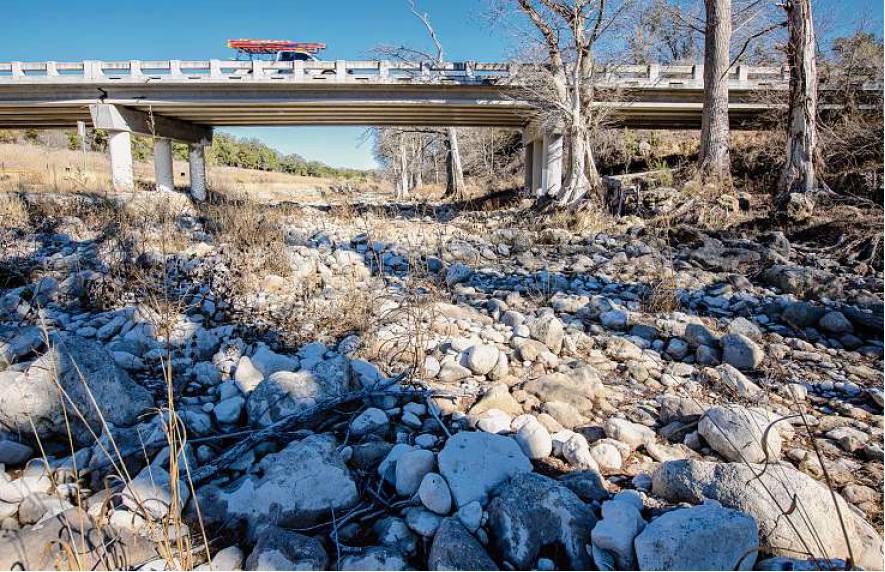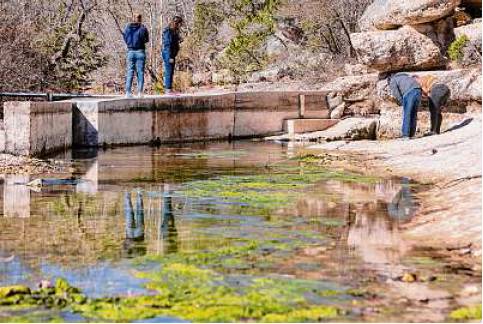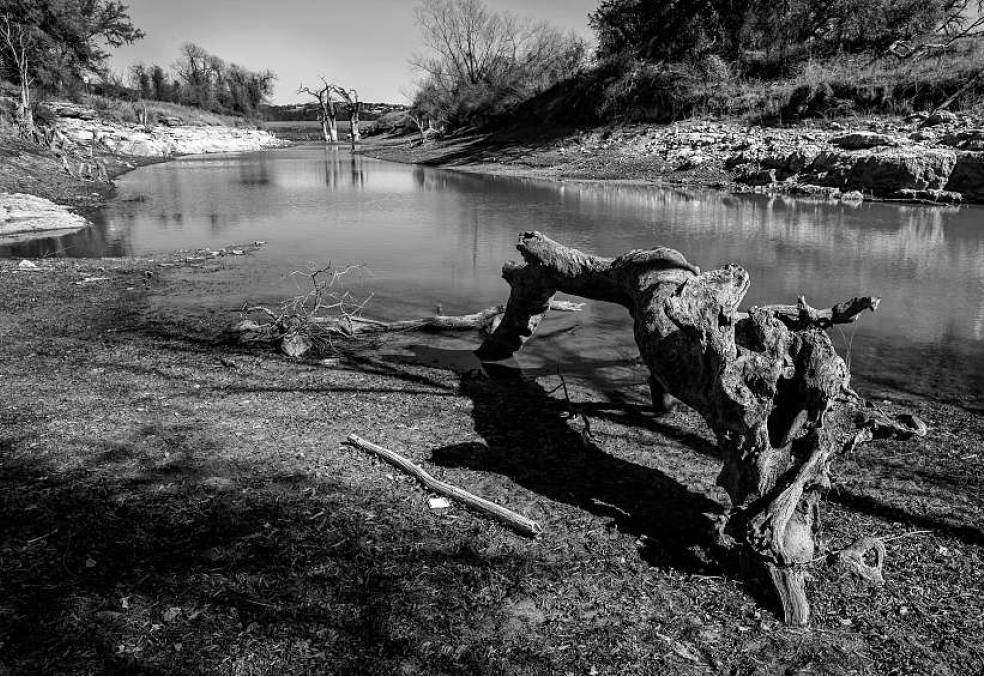Guadalupe runs dry with rainfall scarce
Drought restrictions may persist pending potentially dry spring
By Elena Bruess STAFF WRITER
Despite the recent rain across the region, the Guadalupe River and a popular watering hole are in a sorry state.
January usually sees 2 inches of rainfall in the San Antonio area. But it hasn’t even been close this year.
The region has received just 0.47 inches of rain so far in January, according to the National Weather Service. This follows San Antonio’s second- worst month for rainfall on record.
On average, San Antonio gets about 33 inches of rain annually. Last year, the area only received 11.51 inches.
“It’s always welcome to have some relief from rainfall,” said Paul Bertetti, senior director for aquifer science research and modeling at the Edwards Aquifer Authority. “But we need significantly more rain over a longer period of time to break the drought. Even if we get some average rainfall this year, that still might not be enough to make a difference.”
The Guadalupe River — a hot spot for water sports and swimming — usually has an average flow of between 100 and 300 cubic feet per second.
This week, the river went completely dry upstream from Canyon Lake.
As of Friday, the flow in this area was at 25 cfs. And at Jacob’s Well in Wimberly — a Hill Country swimming hole that attracts people from around the region — the water has nearly stopped flowing. It was at just 0.07 cfs as of Friday morning.
“The Guadalupe is a good indicator that the region needs much more rain and more flow in order to recharge the Trinity Aquifer,” Bertetti said. “It’s really been hit hard by the drought.
The soils and sediments near the surface are dried out. For the Edwards Aquifer to recharge effectively, those surface sediments have to re-saturate and moisten up. This means it will take more time to make up for the amount of rain the area has lost over the last year.
The Edwards Aquifer is currently about 25 feet below the 660-foot threshold for the Edwards Aquifer Authority to remove drought restrictions for the counties it oversees. Nevertheless, the San Antonio Water System, the city-owned utility, may continue drought restrictions after the aquifer reaches 660 feet until the aquifer looks good long term.
March, April and May are typically good months for precipitation, however, recent climate predictions found that this spring and summer might be dry again. It may not be until the fall that the region sees normal rainfall.
Elena Bruess writes for the Express-News through Report for America, a national service program that places journalists in local newsrooms. ReportforAmerica.org . elena.bruess@ express-news.net


